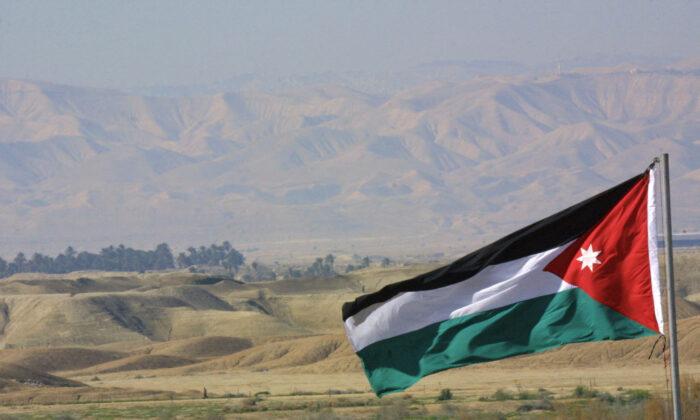Moscow’s ambassador to the United States repeated claims on Nov. 9 that Ukraine intends to stage a nuclear “provocation” involving a “dirty bomb” with the aim of blaming the fallout on Russia.
Anatoly Antonov was cited by Russia’s TASS news as claiming that Kyiv would “make the provocation look like the use of a tactical nuclear weapon by Russia” in order to “drag the United States and NATO directly into the conflict.”
Since March, Russian officials have repeated the same allegation on several occasions. At an Oct. 25 meeting of the U.N. Security Council, Russian diplomats reportedly shared “evidence” of their claims with top Western officials.

Nevertheless, U.S., British, and French officials have described the Russian allegation as “transparently false.”
Their Ukrainian counterparts also have denied the claims, saying that it’s Moscow—not Kyiv—that plans to detonate a “dirty bomb” in Ukrainian territory.
So-called dirty bombs typically feature conventional explosives combined with radioactive material.
Earlier this month, the International Atomic Energy Agency (IAEA), the U.N.’s nuclear watchdog, sent a team of inspectors—at Kyiv’s request—to three sites inside Ukraine with the ostensible aim of looking into the claims.
On Nov. 3, the IAEA declared that it had found no evidence of clandestine nuclear activity at any of the three sites it had visited.
‘Reckless and Provocative’
Antonov also criticized what he described as “reckless and provocative statements” by Kyiv’s Western allies, citing recent assertions by the U.S. Army’s 101st Airborne Division that it was “ready” to enter the conflict on the Ukrainian side.On Oct. 21, CBS News reported that thousands of troops from the 101st Airborne Division, along with “heavy equipment,” had been deployed to Romania. According to the report, the deployed troops are carrying out live-fire exercises with their Romanian counterparts at a number of sites near the Ukrainian border.
A NATO member since 2004, Romania shares a roughly 373-mile (600-kilometer) border with southwestern Ukraine.
The report also quoted U.S. military officials as saying that U.S. forces deployed in Romania are prepared to cross the border into Ukraine in the event of a Russian attack on NATO territory.
An elite light-infantry army division, the 101st Airborne is specialized in rapid assault operations and seizing hostile terrain.
Assertions made by U.S. officials cited in the report conflict with earlier statements by U.S. President Joe Biden, who has repeatedly said there were “no plans” to send American troops into Ukraine.

Security Chief in Tehran
Nikolai Patrushev, head of the Russian Security Council, traveled to Tehran on Nov. 9 for talks with his Iranian counterpart, Ali Shamkhani.According to a Russian Security Council statement cited by TASS, they discussed issues related to “information security,” along with means of combating “attempts by Western intelligence agencies to interfere in the domestic affairs of the two countries.”
They also reportedly exchanged views on a range of international issues, including the ongoing conflict in Ukraine and recent developments in the Middle East region.
In recent weeks, Kyiv and its Western allies have accused Russia of using Iranian-made Shahed 136 combat drones to strike Ukrainian targets, including the country’s critical energy infrastructure.
Although Moscow and Tehran both initially denied the claims, Iran acknowledged on Nov. 5 that it had supplied Russia with a “small number” of unmanned aerial vehicles.
However, Iranian officials insist that the drones were delivered to Russia before Moscow began its “special military operation” in Ukraine on Feb. 24.
Kyiv, for its part, has challenged the claim, saying that Ukrainian forces were successfully downing at least 10 Iranian drones per day.
For the past several weeks, Iran has been rocked by sporadic violence in different parts of the country, along with a wave of anti-government protests that have continued intermittently since mid-September.
The protests were initially sparked by the death of a young woman who died in police custody in Tehran after being detained by police for wearing “inappropriate attire.”
Iranian officials blame the ongoing unrest on “foreign enemies,” including the United States and Israel, providing little evidence to support their claims.
The protests first erupted in Tehran on Sept. 16, the same day that Iran officially joined the Shanghai Cooperation Organization, a bloc of Eurasian states in which Russia plays a leading role.





